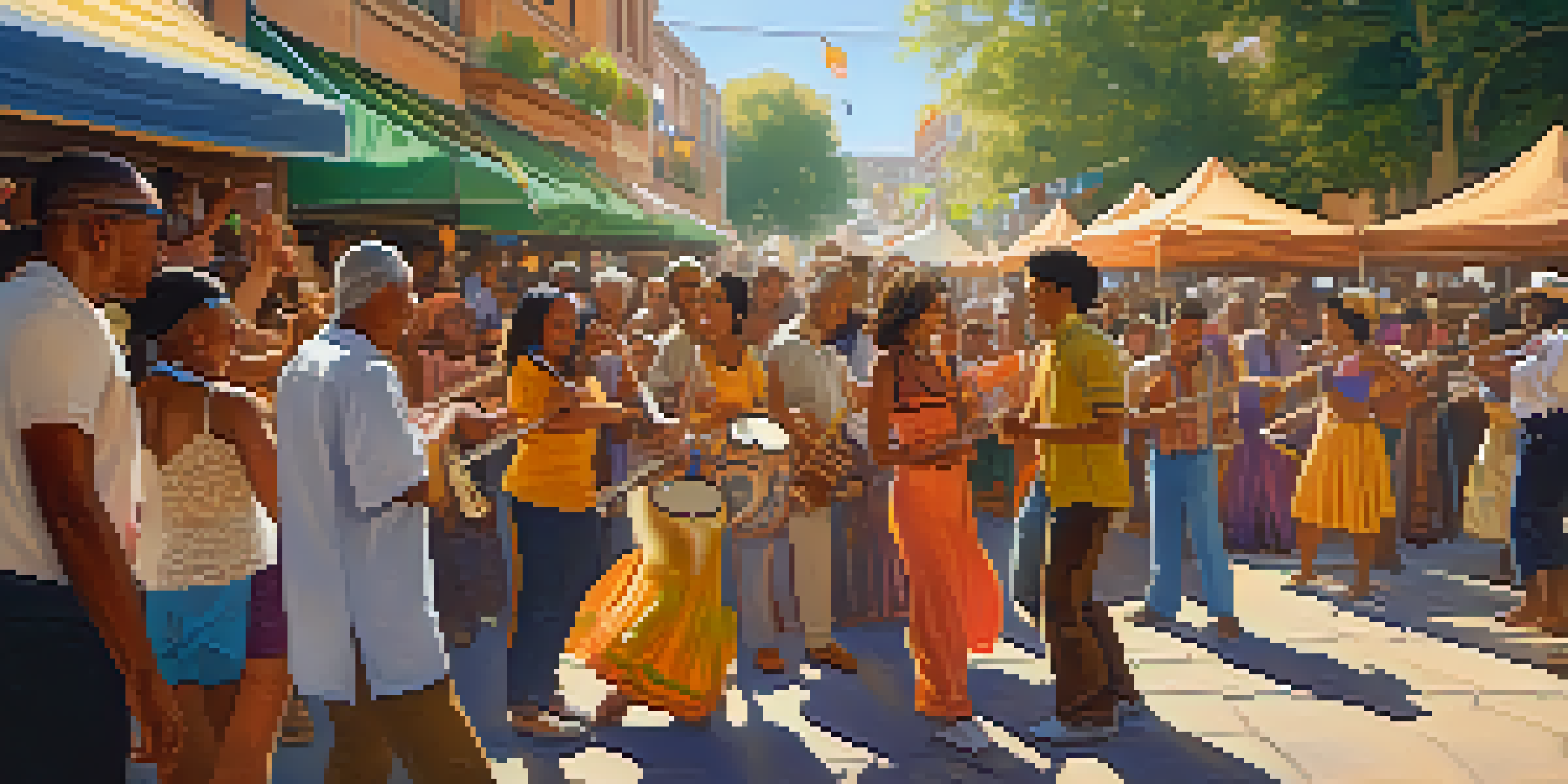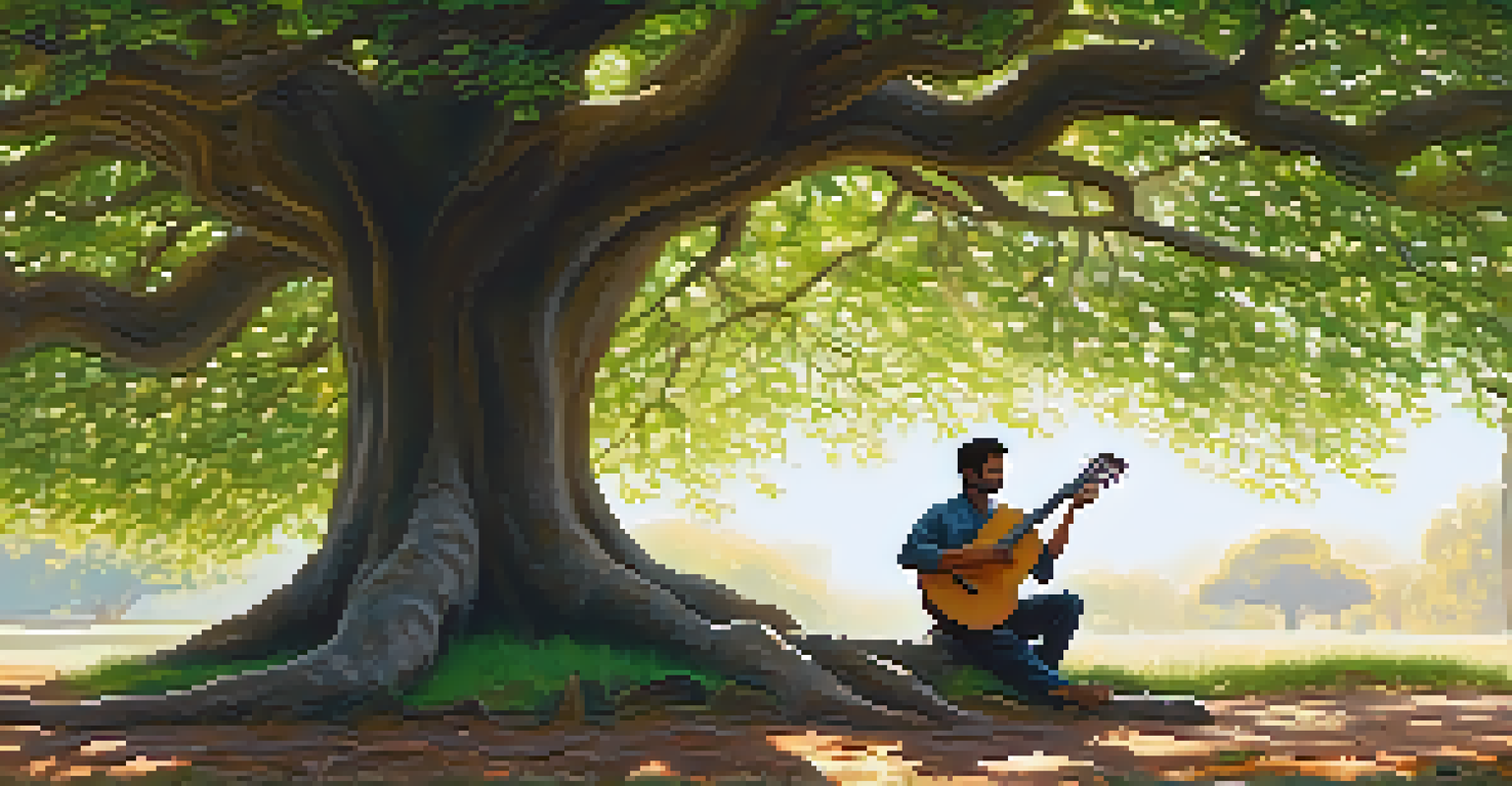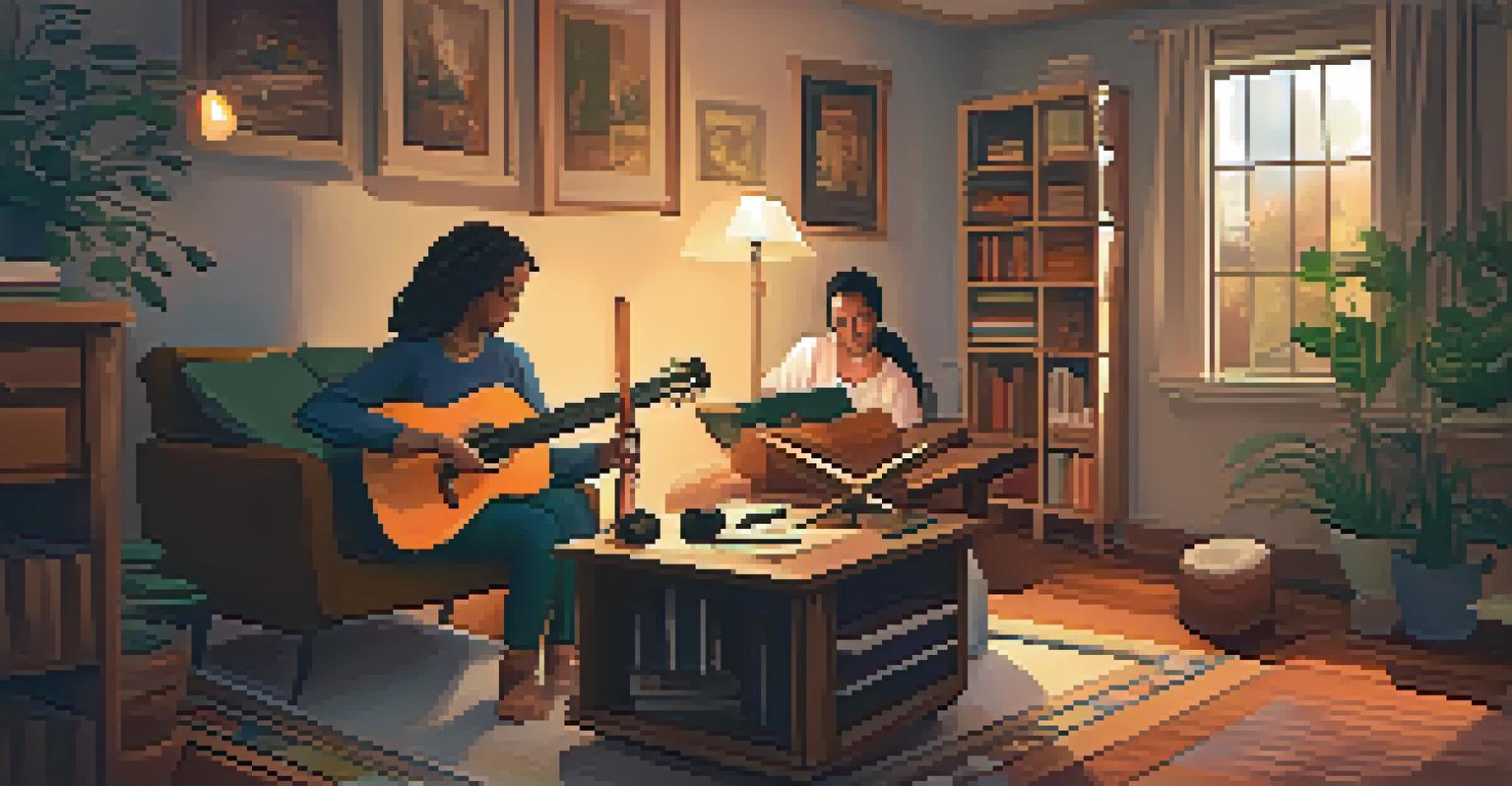The Art of Storytelling Through Music in Different Cultures

The Universal Language of Music and Storytelling
Music is often called the universal language, and for good reason. It transcends barriers, allowing people from different backgrounds to connect through shared emotions and experiences. Just like a well-told story, music can evoke powerful feelings, creating a sense of unity among listeners, regardless of their cultural origins.
Music can change the world because it can change people.
In many cultures, music is not just entertainment; it’s a vital part of storytelling traditions. From ancient ballads to contemporary songs, melodies carry narratives that shape identities, values, and shared histories. This ability to convey stories through sound makes music a compelling medium for cultural expression.
For instance, the use of traditional instruments, rhythms, and styles often reflects the stories of a community. Whether it’s the haunting notes of a Native American flute or the vibrant beats of Afrobeat, each musical form adds a unique layer to the narrative, showcasing the diversity of human experiences.
Folklore and Traditions: A Musical Perspective
Folklore is rich with tales that have been passed down through generations, often embedded in the fabric of a culture's music. These stories often address themes of love, loss, and heroism, helping to preserve the collective memory of a people. Traditional songs serve not just as entertainment but as a means of education, teaching values and morals through engaging narratives.

For example, in Ireland, traditional folk music often tells the tales of legendary heroes or significant historical events. The storytelling aspect is so integral that many songs include specific details about the characters and their journeys, making listeners feel a sense of connection to the past.
Music as a Cultural Storytelling Tool
Music transcends cultural barriers, serving as a powerful medium for storytelling that reflects shared emotions and experiences.
Similarly, in the African continent, many tribes use music to recount their history and cultural beliefs, employing call-and-response patterns that invite audience participation. This interactive form of storytelling not only entertains but also strengthens communal bonds, ensuring that everyone is part of the narrative.
Modern Storytelling: The Impact of Popular Music
In today's world, popular music continues the rich tradition of storytelling but often reflects contemporary issues. Artists use their platforms to address social justice, love, and personal struggles, making their music relatable to a global audience. This modern approach to storytelling allows listeners to engage with narratives that resonate with their own lives.
Where words fail, music speaks.
Take, for instance, the music of artists like Taylor Swift or Kendrick Lamar. Swift weaves intricate stories of relationships and heartbreak, while Lamar explores themes of identity and systemic inequality through his powerful lyrics. Their songs encapsulate the essence of human experience, connecting deeply with listeners from various backgrounds.
Moreover, music videos and live performances add visual storytelling dimensions, enhancing the narrative experience. By combining music with imagery, artists can convey even deeper messages, allowing audiences to feel the emotional weight of the stories being told.
The Role of Instruments in Cultural Narratives
Instruments play a crucial role in storytelling through music, as each one carries its own cultural significance and emotional resonance. The choice of instrument can change the entire feel of a story, influencing how the audience perceives the narrative. For example, the sitar in Indian classical music brings a sense of spirituality and depth to the stories it accompanies.
In contrast, the deep, resonant tones of a didgeridoo in Aboriginal music connect listeners to the earth and nature, embodying stories of creation and land. Each instrument contributes a unique voice to the narrative, helping to convey the emotions and themes embedded within the music.
Community Through Musical Narratives
Communal music-making fosters a sense of belonging, allowing individuals to connect and celebrate their cultural heritage through shared stories.
Understanding these instruments and their cultural contexts enables us to appreciate the richness of storytelling in music. It highlights how different societies express their narratives and emotions, making music a vital aspect of cultural identity.
Community and Music: A Shared Storytelling Experience
Music often serves as a communal activity, bringing people together to share and celebrate stories. In many cultures, communal singing or playing music is an integral part of social gatherings, where stories are told and retold through songs. This collective participation fosters a sense of belonging and shared identity among community members.
For example, in the South American tradition of Samba, communities come together to celebrate through music, dance, and storytelling during festivals. These events not only entertain but also reinforce cultural ties and collective memory, allowing participants to engage with their heritage in a lively and meaningful way.
Furthermore, music workshops and community programs emphasize storytelling as a tool for connection. By sharing personal stories through music, individuals can express their experiences and emotions while also learning from others, creating a rich tapestry of shared narratives.
The Therapeutic Power of Music and Storytelling
Beyond cultural expression, music and storytelling have profound therapeutic benefits. They can help individuals process emotions, cope with trauma, and find healing through shared narratives. Many therapeutic practices incorporate music as a way to facilitate communication and emotional expression, particularly for those who may struggle to articulate their feelings.
For instance, music therapy often uses songs and storytelling to help clients explore their inner thoughts and experiences. By engaging with the music, individuals can connect with their emotions, allowing for reflection and healing in a safe environment. This process often leads to personal growth and a deeper understanding of one's own story.
Therapeutic Benefits of Music
Music and storytelling offer therapeutic benefits, helping individuals process emotions and find healing through shared narratives.
Additionally, community programs that combine music and storytelling can foster resilience in individuals facing adversity. By sharing their experiences through song, people can find solidarity and support, breaking down feelings of isolation and building a sense of hope.
Conclusion: The Enduring Legacy of Musical Storytelling
The art of storytelling through music is a timeless tradition that continues to thrive across cultures. As we explore diverse musical expressions, we uncover the unique narratives that shape our understanding of humanity. Each song, rhythm, and instrument tells a story, inviting us to connect with the emotions and experiences of others.
In an increasingly globalized world, music serves as a bridge, linking us to different cultures and perspectives. By embracing the stories told through music, we can appreciate the richness of human experience and the diverse ways we express our identities.

Ultimately, the legacy of musical storytelling reminds us of our shared humanity, encouraging empathy and understanding through the universal language of music. As we listen and engage with these stories, we become part of a larger narrative, one that celebrates the beauty and complexity of life.